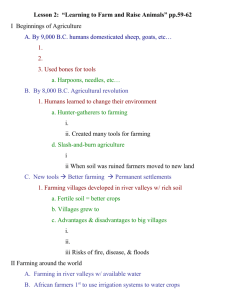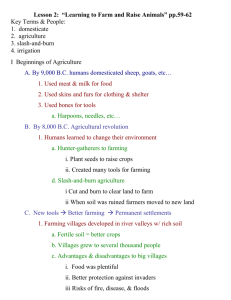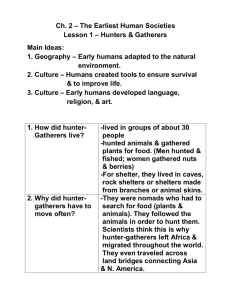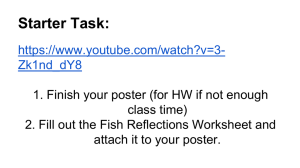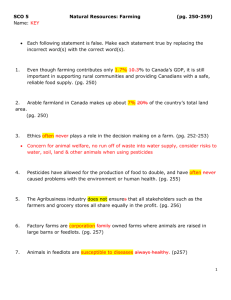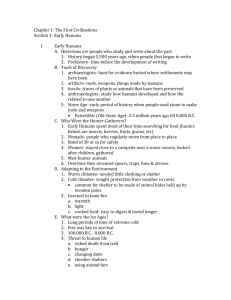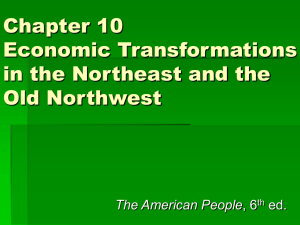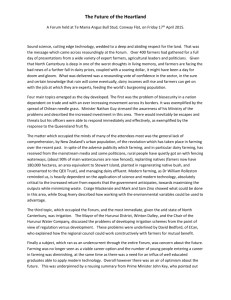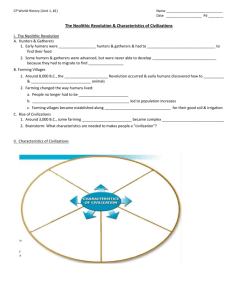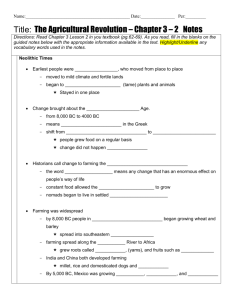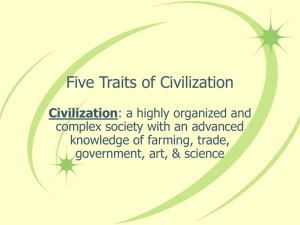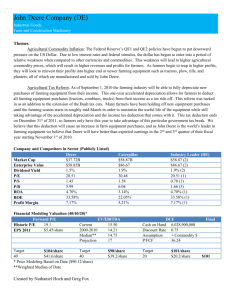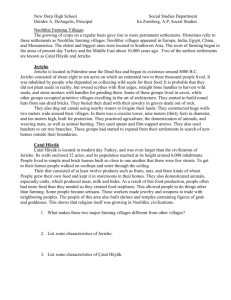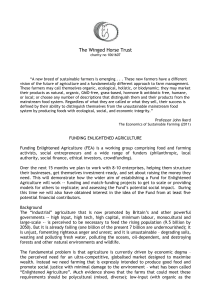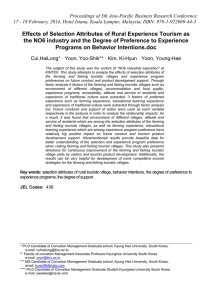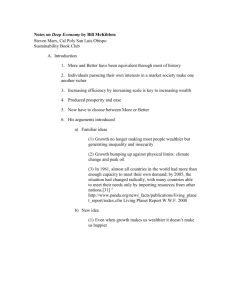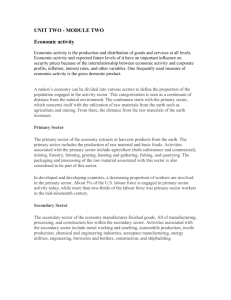Ch.2-2 Packet
advertisement
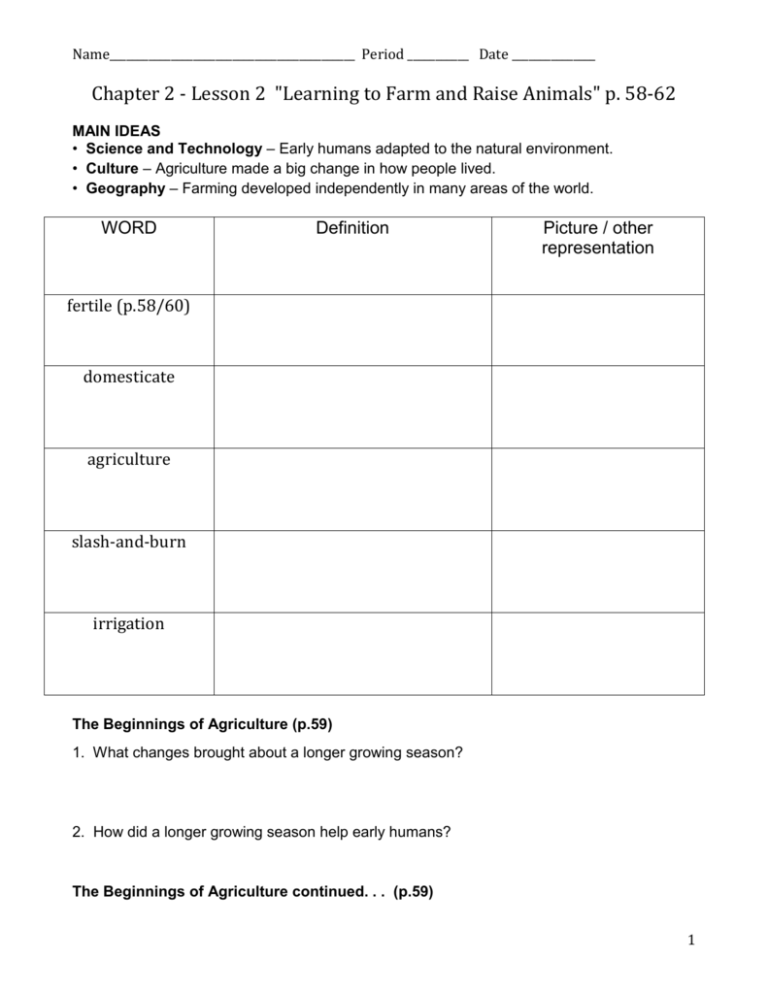
Name____________________________________________ Period ___________ Date _______________ Chapter 2 - Lesson 2 "Learning to Farm and Raise Animals" p. 58-62 MAIN IDEAS • Science and Technology – Early humans adapted to the natural environment. • Culture – Agriculture made a big change in how people lived. • Geography – Farming developed independently in many areas of the world. WORD Definition Picture / other representation fertile (p.58/60) domesticate agriculture slash-and-burn irrigation The Beginnings of Agriculture (p.59) 1. What changes brought about a longer growing season? 2. How did a longer growing season help early humans? The Beginnings of Agriculture continued. . . (p.59) 1 Name____________________________________________ Period ___________ Date _______________ 3. What kinds of animals did early humans domesticate? 4. What did the early humans use the animals for? 5. Once the animals died / were killed, what did early humans do with their bones, skins and internal parts? 6. What new farming tools and methods did early farmers invent? 7. What was the impact of new tools on early humans? Settlements Begin (p. 60-61) 8. ________________ soil helped to produce bigger and better crops for early farmers. 9. Where was the soil extra rich? Why was the soil extra rich? 10. What kinds of materials did they use to make their houses / shelters? 11. How many people lived in villages when settlements first began? __________________ Settlements Begin continued. . . .(p. 60-61) 12. What were TWO advantages of living in villages? 2 Name____________________________________________ Period ___________ Date _______________ 13. What are THREE disadvantages / risks of living in villages? 14. How did farming change the way people lived? Farming Develops in Many Places (p.61) 15. Why did farming develop in river valleys? 16. How does irrigation help farmers? 17. How does terrace farming help farmers? Lesson Summary (p.62) • After the Ice Age, humans learned to domesticate animals and plant crops. • As people learned to be better farmers, farming villages developed. • Farming developed independently in many parts of the world. Why it matters now (p.62) • The development of farming led to a great increase in human population. • Today most people depend on agriculture for their food. • In some parts of the world, such as Africa and India, most people are still farmers who live in villages. 3


